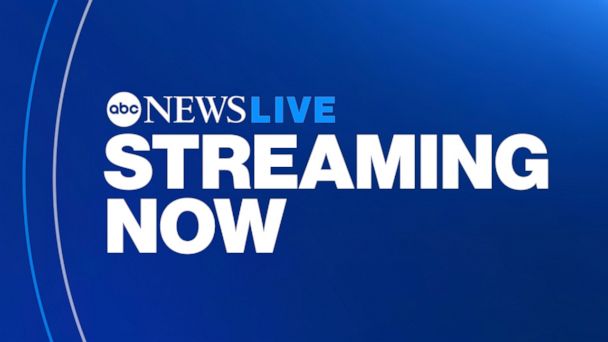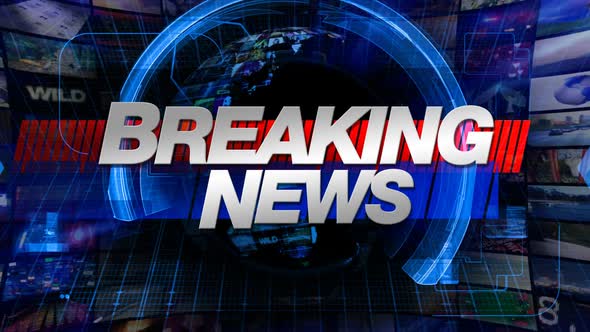News Anchors In The 70s - A Look Back At Broadcast Icons
Think back, if you can, to a time when news came to you in a very particular way. It was a period when the evening broadcast was, well, the main event for getting your daily happenings. This was long before the constant stream of updates we have today, and certainly before social media feeds took over our screens. People really relied on these voices, these faces, to tell them what was going on in the wide world.
These folks, the news anchors of the 1970s, were more than just people reading words from a teleprompter. They were, in some respects, a steady presence, almost like a visitor welcomed into your living space each night. They helped make sense of things, whether it was big global events or just what was happening close to home. You could, for instance, just turn a knob on your television set, and there they would be, ready to share the day's important information.
The impact these individuals had was quite significant. They helped shape how folks understood their world, delivering facts with a certain kind of authority and a clear sense of fairness. It's almost as if they built a connection with their viewers, making the act of watching the news feel like a shared experience. We're going to take a closer look at what made these broadcast personalities so special during that particular decade.
Table of Contents
- The Steady Voices of a Different Time
- Pioneers and Breaking Barriers
- The Trust Factor - Why Did We Believe Them?
- The Evolution of the News Desk
- Local Heroes - Beyond the Network Stars
- A Glimpse Behind the Scenes
- The Enduring Appeal of Broadcast Personalities
- Reflecting on a Golden Era
The Steady Voices of a Different Time
Back in the 1970s, the way we got our news was, well, quite different from how it is today. There wasn't a constant stream of updates or social media feeds telling us what was happening. Instead, people gathered around their television sets for the evening news, and the folks who delivered it became a really important part of daily life. These legendary figures, the news anchors of the time, were the calm, steady voices that walked you through some of history's truly memorable moments. They were, in a way, almost like members of your own family, appearing in your living room each night to bring you the facts.
How did news anchors in the 70s shape our evenings?
These broadcasters had a special ability to present information in a way that was clear, interesting, and even a little bit entertaining, making it a real pleasure to watch them. Over 4,000 fans have actually voted on more than 70 people who they consider the most influential news anchors of all time, which just shows how much these individuals meant to people. For instance, Connie Chung, early in the '70s, worked alongside Walter Cronkite at CBS Evening News. She later moved on to become an anchor for NBC News at Sunrise and then the weekend edition of Nightly News by the early '80s, so she really made a mark.
Pioneers and Breaking Barriers
The 1970s were a time of change, and that included who you saw sitting at the news desk. There were individuals who really broke new ground, showing that women could also be the main voice delivering the news. Jessica Savitch, for example, was one of the first women to anchor a network evening newscast by herself. She was following in the footsteps of other remarkable women like Marlene Sanders from ABC News and Catherine Mackin from NBC News, who had paved the way. It was, you know, a pretty big deal to see these changes happening on screen.
Who were the groundbreaking women news anchors in the 70s?
The shift to having women in such prominent roles was a significant step forward. Later on, there was an attempt to team Reasoner with Barbara Walters, which, in some respects, didn't quite work out. But then, in the late '70s, things really started to click when Roone Arledge, who came from the sports side of things, took charge. This period saw many new faces appearing on screen, changing the traditional look of the news. We can, for example, see a handful of local female pioneers from that time, like Maureen Bunyan, who in 1978 became a co-anchor for Channel 9's 6 o'clock news. Renee Poussaint also became a co-anchor for the 6 and 11 pm news on Channel 7 starting in 1978. J.C. Hayward, too, began as a co-anchor for Channel 9's 5:30 newscast in 1972, and Meryl Comer became a co-anchor for Channel 4 in 1973. These women were, basically, forging new paths in local broadcasting.
The Trust Factor - Why Did We Believe Them?
What really stood out about these news presenters was the deep sense of trust they inspired. They delivered the news with a certain kind of authority and a clear sense of fairness, making their voices ones that households across the country came to rely on. You just knew you could believe what they were saying the moment their faces appeared on your television screen. This was, in a way, a time when the news felt very dependable, very solid.
What made 70s news anchors so reliable?
Before the days of constant news updates and social media, these individuals were the primary source of information, and they carried that responsibility with a lot of care. Their presentation style, often calm and direct, helped build that connection with the audience. It was a time when the news was, more or less, a shared experience, something you watched together as a family, trusting the person on the screen to tell you the unvarnished truth. The feeling was that they were there to inform, not to persuade, and that made a real difference in how people received the information.
The Evolution of the News Desk
The look and feel of news broadcasts also saw some changes during the 1970s. For example, when Chet Huntley retired, NBC Nightly News was born, but it started with a rather unusual setup. It featured a rotating pair of anchors chosen from a group of three: Brinkley, Frank McGee, and John Chancellor. Viewers, you know, never really knew which two anchors they would see on any given night. This kind of setup was a bit different from what people were used to, and it shows how the networks were trying out new things to see what worked best for the audience.
How did the look of news broadcasts change for news anchors in the 70s?
Network and local newscasts seemed to discover a lot of these talented individuals all at once, starting in the early 1970s. These people then became reporters and anchors in city after city, bringing their unique styles to different communities. For example, the first clip of Reynolds and Smith as an anchor team is probably from 1969, showing how these partnerships began to form. Later on, we see changes like Stuart being moved to the 10 p.m. slot, and Jim Benemann moving from Channel 9 to Channel 4 as a weekend anchor with Kathy Walsh. These movements and new pairings were, in a way, shaping the future of broadcast news, trying to find the right chemistry for their viewers.
Local Heroes - Beyond the Network Stars
While the big network anchors got a lot of attention, local news anchors were just as important, if not more so, for many people. They were the faces you saw every day, talking about things that directly affected your community. These local stations had their own personalities and traditions. For instance, WISN 12 has a history documented in photos, and its original call letters were WTVW before changing in 1955 when the station was bought by Hearst. Sandy, too, was known as "the movie gal" for hosting "The Big Money Movie" on KIRO TV, which aired every afternoon at 3:30 pm. These local figures were, quite simply, integral to the daily lives of their viewers.
What was the impact of local news anchors in the 70s?
Local news teams often became very familiar to their communities. John Kelly, Al Ackerman, and Marilyn Turner were some of those familiar faces. Amburg took over as the lead anchor of Channel 7 news in 1969, and within a few months, he and news director Pat Polillo began developing an entirely new format that would, literally, change local TV news forever. These local stations also invested in their capabilities; Channel 7, for example, started off the 1980s by buying its own $290,000 Bell Jet Ranger III helicopter and adding $50,000 worth of special communications equipment. This shows how dedicated they were to getting the news out to their audiences, even if it meant, you know, flying high above the city.
A Glimpse Behind the Scenes
CNN, for example, looked back at the seventies and asked its current anchors and hosts to share photos of themselves from that time. This offers a little peek at how they looked during the days of Nixon, Star Wars, and all the other defining elements of that era. There's even a subreddit with 56,000 subscribers dedicated to the 70s community, which was launched on January 13, 2011. This really shows that there's a strong interest in remembering and exploring that particular decade, including the people who brought us the news. We didn't, you know, have to remember what platform the nightly news was on or where our local TV stations were; they were just always there, a constant presence.
The Enduring Appeal of Broadcast Personalities
The ability of these news anchors to connect with people was truly special. Some people just have that knack for delivering information in a way that is clear, engaging, and even a bit entertaining, making it a real joy to watch them. They had a voice that every household seemed to rely on, and you just knew you could trust them the moment they appeared on your television screen. Brian Williams, for instance, was the anchor of NBC Nightly News from December 2004 through February 2015, and he then became the chief anchor on MSNBC until his retirement in December 2021. This shows how long these careers could last and how much people valued these consistent voices. You could, for example, see a cover shot of the entire news, weather, and sports anchors, like Charlie Gaddy and Bobbie Battista behind the anchor desk, at WRAL News, with their set in Studio B during the late '70s to 1981.
Reflecting on a Golden Era
The 1970s were, in many respects, a golden era for broadcast news. The news anchors of that time played a very important part in people's lives, offering a sense of stability and truth in a world that was always changing. They were the trusted messengers who helped us understand the big events and the small ones, too. The impact of these individuals, both at the network level and in local communities, continues to be remembered and appreciated by those who lived through that period. It was a time when turning on the television for the news was, essentially, a daily ritual, a moment of connection with the wider world, brought to you by these memorable faces and voices.
- Daryl Sabara Today Show
- Chunky Heel Platform Boots
- Gi Jane Images
- How Tall Robert Redford
- Masked Singer Who Went Home

ABC News Live - 24/7 live news stream | Watch Live News on ABCNL

What Are Latest News Today - The Morning News
US News - Breaking News Brief - Apps on Google Play